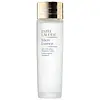What's inside
What's inside
 Key Ingredients
Key Ingredients

 Benefits
Benefits

 Concerns
Concerns

No concerns
 Ingredients Side-by-side
Ingredients Side-by-side

Water
Skin ConditioningBifida Ferment Lysate
Skin ConditioningPEG-75
HumectantPropanediol
SolventButylene Glycol
HumectantBetaine
HumectantPentylene Glycol
Skin ConditioningLactobacillus Ferment
Skin ConditioningAcetyl Hexapeptide-8
HumectantAcetyl Glucosamine
Skin ConditioningTrehalose
HumectantCaffeine
Skin ConditioningSodium Hyaluronate
HumectantAnthemis Nobilis Flower Extract
MaskingCaprylyl Glycol
EmollientCarbomer
Emulsion StabilisingPPG-5-Ceteth-20
EmulsifyingCitric Acid
BufferingPotassium Sorbate
PreservativeSodium Citrate
BufferingTromethamine
BufferingDisodium EDTA
Phenoxyethanol
PreservativeWater, Bifida Ferment Lysate, PEG-75, Propanediol, Butylene Glycol, Betaine, Pentylene Glycol, Lactobacillus Ferment, Acetyl Hexapeptide-8, Acetyl Glucosamine, Trehalose, Caffeine, Sodium Hyaluronate, Anthemis Nobilis Flower Extract, Caprylyl Glycol, Carbomer, PPG-5-Ceteth-20, Citric Acid, Potassium Sorbate, Sodium Citrate, Tromethamine, Disodium EDTA, Phenoxyethanol
Water
Skin ConditioningRosa Damascena Flower Water
MaskingCoco-Caprylate/Caprate
EmollientC9-12 Alkane
SolventPropanediol
SolventEthylhexyl Palmitate
EmollientPentylene Glycol
Skin ConditioningGlycerin
HumectantSqualane
EmollientRosa Damascena Flower Extract
MaskingRosa Damascena Extract
MaskingCamelina Sativa Seed Oil
Skin ConditioningRosa Rubiginosa Seed Oil
EmollientCucumis Sativus Fruit Extract
EmollientRosa Damascena Flower Oil
MaskingTocopherol
AntioxidantSodium Citrate
BufferingSodium Chloride
MaskingEthylhexylglycerin
Skin ConditioningXanthan Gum
EmulsifyingCitric Acid
BufferingCaprylic/Capric Triglyceride
MaskingSorbitan Sesquioleate
Emulsifying1,2-Hexanediol
Skin ConditioningCaprylyl Glycol
EmollientSodium Benzoate
MaskingPotassium Sorbate
PreservativeCitronellol
PerfumingGeraniol
PerfumingWater, Rosa Damascena Flower Water, Coco-Caprylate/Caprate, C9-12 Alkane, Propanediol, Ethylhexyl Palmitate, Pentylene Glycol, Glycerin, Squalane, Rosa Damascena Flower Extract, Rosa Damascena Extract, Camelina Sativa Seed Oil, Rosa Rubiginosa Seed Oil, Cucumis Sativus Fruit Extract, Rosa Damascena Flower Oil, Tocopherol, Sodium Citrate, Sodium Chloride, Ethylhexylglycerin, Xanthan Gum, Citric Acid, Caprylic/Capric Triglyceride, Sorbitan Sesquioleate, 1,2-Hexanediol, Caprylyl Glycol, Sodium Benzoate, Potassium Sorbate, Citronellol, Geraniol
 Reviews
Reviews

Ingredients Explained
These ingredients are found in both products.
Ingredients higher up in an ingredient list are typically present in a larger amount.
Caprylyl Glycol is a humectant and emollient, meaning it attracts and preserves moisture.
It is a common ingredient in many products, especially those designed to hydrate skin. The primary benefits are retaining moisture, skin softening, and promoting a healthy skin barrier.
Though Caprylyl Glycol is an alcohol derived from fatty acids, it is not the kind that can dry out skin.
This ingredient is also used as a preservative to extend the life of products. It has slight antimicrobial properties.
Learn more about Caprylyl GlycolCitric Acid is an alpha hydroxy acid (AHA) naturally found in citrus fruits like oranges, lemons, and limes.
Like other AHAs, citric acid can exfoliate skin by breaking down the bonds that hold dead skin cells together. This helps reveal smoother and brighter skin underneath.
However, this exfoliating effect only happens at high concentrations (20%) which can be hard to find in cosmetic products.
Due to this, citric acid is usually included in small amounts as a pH adjuster. This helps keep products slightly more acidic and compatible with skin's natural pH.
In skincare formulas, citric acid can:
While it can provide some skin benefits, research shows lactic acid and glycolic acid are generally more effective and less irritating exfoliants.
Most citric acid used in skincare today is made by fermenting sugars (usually from molasses). This synthetic version is identical to the natural citrus form but easier to stabilize and use in formulations.
Read more about some other popular AHA's here:
Learn more about Citric AcidPentylene glycol is typically used within a product to thicken it. It also adds a smooth, soft, and moisturizing feel to the product. It is naturally found in plants such as sugar beets.
The hydrophilic trait of Pentylene Glycol makes it a humectant. As a humectant, Pentylene Glycol helps draw moisture from the air to your skin. This can help keep your skin hydrated.
This property also makes Pentylene Glycol a great texture enhancer. It can also help thicken or stabilize a product.
Pentylene Glycol also acts as a mild preservative and helps to keep a product microbe-free.
Some people may experience mild eye and skin irritation from Pentylene Glycol. We always recommend speaking with a professional about using this ingredient in your routine.
Pentylene Glycol has a low molecular weight and is part of the 1,2-glycol family.
Learn more about Pentylene GlycolPotassium Sorbate is a preservative used to prevent yeast and mold in products. It is commonly found in both cosmetic and food products.
This ingredient comes from potassium salt derived from sorbic acid. Sorbic acid is a natural antibiotic and effective against fungus.
Both potassium sorbate and sorbic acid can be found in baked goods, cheeses, dried meats, dried fruit, ice cream, pickles, wine, yogurt, and more.
You'll often find this ingredient used with other preservatives.
Learn more about Potassium SorbatePropanediol is an all-star ingredient. It softens, hydrates, and smooths the skin.
It’s often used to:
Propanediol is not likely to cause sensitivity and considered safe to use. It is derived from corn or petroleum with a clear color and no scent.
Learn more about PropanediolSodium Citrate is the sodium salts of citric acid. In skincare, it is used to alter pH levels and acts as a preservative.
Its main functions are to maintain the pH of a product and neutralize metal ions.
The acidity of our skin is maintained by our glands and skin biome; normal pH level of skin is slightly acidic (~4.75-5.5).
Being slightly acidic allows our skin to create an "acid mantle". This acid mantle is a thin barrier that protects our skin from bacteria and contaminants.
Learn more about Sodium CitrateWater. It's the most common cosmetic ingredient of all. You'll usually see it at the top of ingredient lists, meaning that it makes up the largest part of the product.
So why is it so popular? Water most often acts as a solvent - this means that it helps dissolve other ingredients into the formulation.
You'll also recognize water as that liquid we all need to stay alive. If you see this, drink a glass of water. Stay hydrated!
Learn more about Water